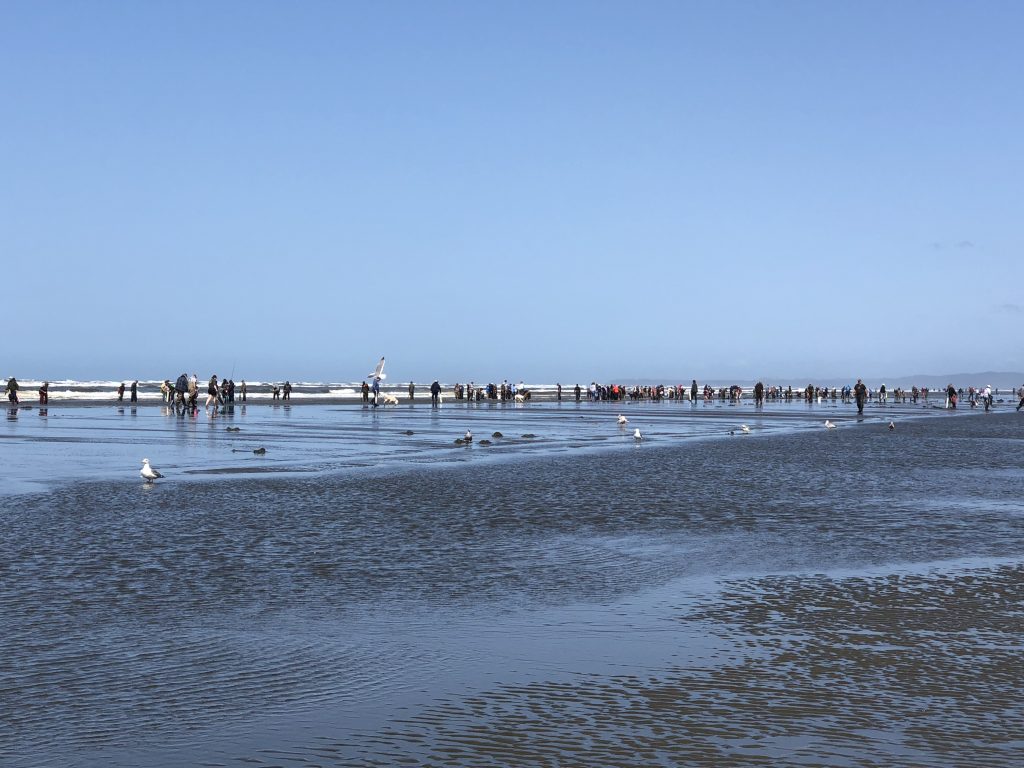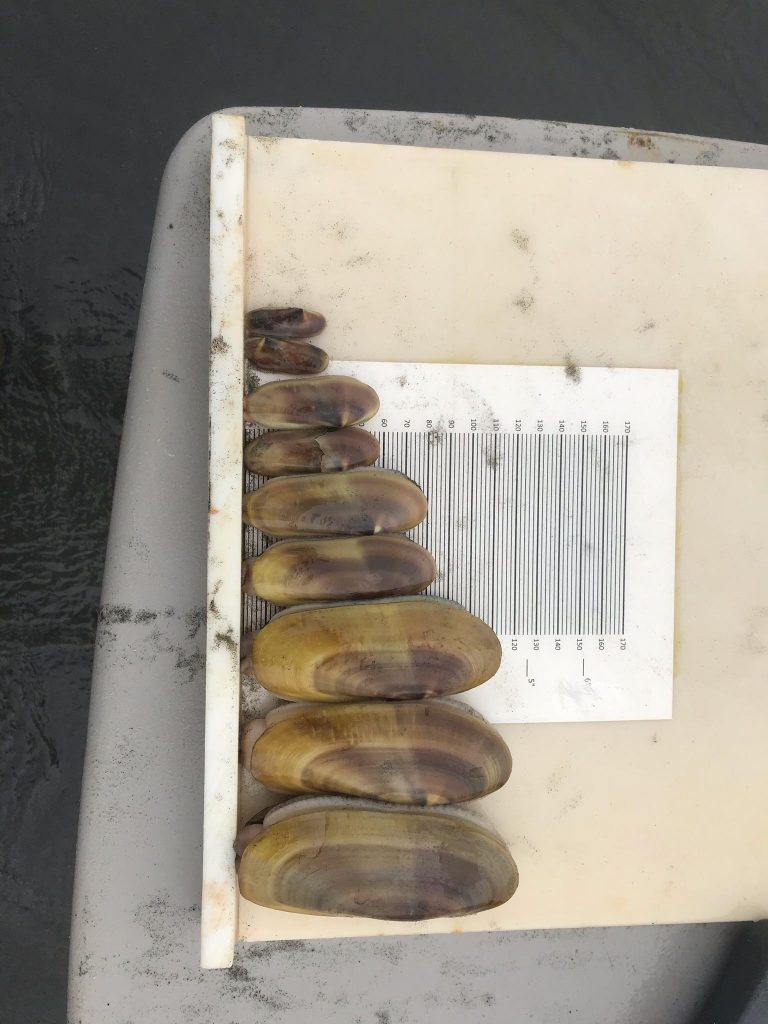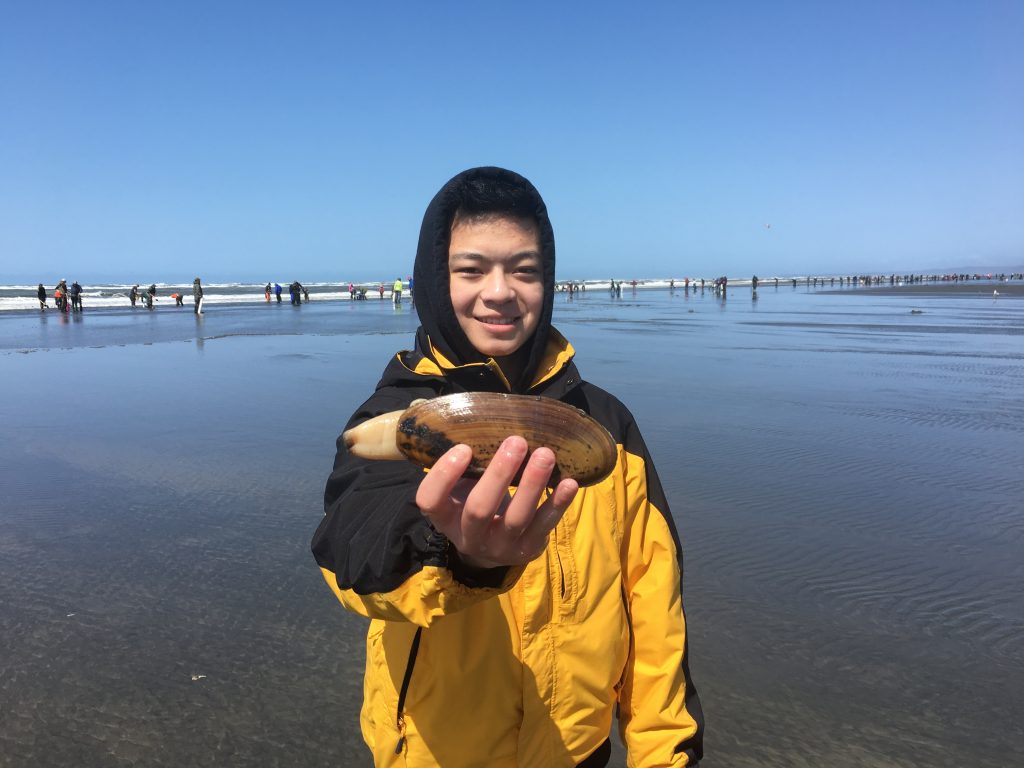Early outlook of coastal razor clam populations is upbeat after initial stock assessments and hopefully will allow digging to begin in early fall and into 2021 Leave a reply
By Mark Yuasa

The 2019-2020 coastal razor clam digs were cut short due to the pandemic, which left millions of clams on beaches in what was turning out to be a memorable season and now all eyes are focused on the future.
“We had a stupendous population of razor clams that were left on the beaches when things got shutdown this past March due to the pandemic,” said Dan Ayres, the head Washington Department of Fish and Wildlife (WDFW) coastal shellfish manager. “The good news is we started our stock assessments (at Long Beach and Copalis) and preliminary reports show two beaches had a good survival and we didn’t lose a bunch of clams.”
Ayres said they completed half of their assessments at Long Beach and finished at Copalis by the end of last month. The main purpose is to get an accurate estimate of the number of clams that are at or more than 3 inches long which can be safely harvested in the coming year without harming the overall population.
“I was nervous before we got started at Long Beach because there have been previous years when we’ve seen lots of clams of beaches at the end of a spring season and then came back in the summer and saw terrible survival rates,” Ayres said. “This time Long Beach is particularly good, and maybe even a little better with some really nice size ranges of clams.”

Ayres said in just one ½-square meter plot at Long Beach, surveyors found clams of all sizes from juveniles clear up to adults 5 inches long.
“From a biological standpoint to see that in one spot means it is very healthy and worth saying ‘hot dog’ since that means we’ve got clams for today, tomorrow and hopefully beyond,” Ayres said. “The abundance at Copalis also looked good.”
“While this is all good news, we have to remember that it is a living population and they live and die on their own schedule so we’ll cross our fingers that we get another good upcoming season.”
Stock assessment workers will finish the last half of Long Beach and also get started at Mocrocks later this month. Ayres’ crew hopes to be finished by the middle of August. Those who’d like to see how assessments are done by WDFW can view a video at http://youtu.be/aC4fu6_8G8I.
The premature end of a successful season of digging occurred in early spring and prior to that more than 3,592,727 razor clams were harvested – includes a wastage of 172,710 clams – on 253,927 digger trips during 66 days of digging from Sept. 27 through March 11. That left 23 days of scheduled digs from March 20 to April 29 and didn’t include additional planned digs in May.

“If this past season had continued without a pandemic, I had projected that by the middle of May we could’ve taken almost 8-million clams and projected around 630,000 digger trips,” Ayres said. “That was a significant economic loss and loss of opportunity that occurred in the spring of 2020.”
A breakdown of the 2019-2020 season showed Long Beach generated 111,122 digger trips with 1,644,196 clams kept for 13.9 clams per person average (the first 15 clams dug regardless of size or condition is a daily limit); Twin Harbors had 56,464 with 755,166 for 12.8; Copalis had 51,380 with 725,451 for 13.6; Mocrocks had 34,960 with 467,915 for 13.0; and Kalaloch was closed the entire season.
Razor clam digging is a huge money maker for small coastal communities who rely on these opportunities during the lean tourist times in fall, winter and spring to help boost their economy.
The average value of the clam harvest to communities is estimated at around $25 million although in strong years it climbed to $35 million in 2012-2013, and $40-plus million in 2013-2014 and around $35 million in 2014-2015. During those strong years, effort ranged from 400,000 to 450,000 diggers.
WDFW also keeps close tabs on a marine toxin known as domoic acid – a natural toxin produced by certain types of marine algae – which can be harmful or even fatal if consumed in enough quantities.
This past season, marine toxin levels for domoic acid remained well under the 20 parts-per-million (ppm) cutoff.
Mother Nature has been known thrown a curve ball in past years when we’ve had great seasons.
The entire coast was closed in late May of 2015 when domoic acid spiked well above the 20 parts per million cut-off level
Since 1991, when the toxin was first detected on the Pacific Coast, outbreaks of domoic acid have prompted the cancellation of three entire razor-clam seasons in Washington — the last one in 2002-03. Twin Harbors Beach never opened in 2015-2016 as marine toxin levels never dipped below the action level.
“I’m excited right now, but we’ll see what happens in the fall and hopefully we aren’t locked back down again (due to COVID-19),” Ayres said. “I am planning on offering as many digs as authority allows us as a state to do.”
Once summer assessments are completed, WDFW staff will draft a “Razor Clam Management Plan” that will be available for review during a public comment period.
Final approval on dates for the fall and winter season will be announced sometime in early September and the first digs will usually occur in late September or early October depending on the low tides. Fall and winter razor clam digs occur during evening low tides while spring-time digs happen during morning low tides.
For more information, go to http://wdfw.wa.gov/fishing/shellfish/razorclams/.

